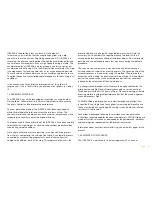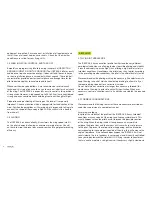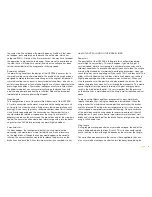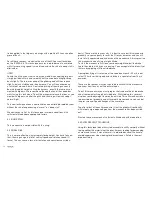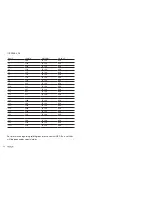
12
to be applied. In fact big ears on wings with a profile of 2 lines can often
prove difficult.
For all these reasons, we advise the use of the 4C3descent technique
on the ICepeaK 8. This technique ensures a rapid descent is achieved
whilst forward wing speed is maintained and so the risk of a deep stall is
eliminated.
HoW?
locate the 4C3on your risers and as you would when applying big ears
simply pull down firmly and smoothly until you see both wingtips drop
back slightly. The forward speed of the glider speed will then reduce
slightly, quickly stabilize and then increase. You will then experience
a fall rate of around 5-6m/s. Controlled turning of the wing can easily
be maintained by weight shifting the harness, exactly the same as you
would with big ears. We recommend the application of the speed bar
whilst using this technique. To exit the maneuver release the lines as you
would with big ears, control the pitch and the wing will quickly adopt
normal flight.
This new technique allows a comfortable and controllable rapid descent
without the risk of experiencing a “cravat” or “deep stall”.
We advise you to first try this technique in smooth conditions with
sufficient altitude above appropriate terrain.
5.3 B-lINe sTall
This manoeuvre is not possible with this wing.
5.4 spIral dIVe
This is a more effective way for rapidly losing height. You have to know
that, the wing can gain a lot of vertical speed and rotation speed (G
force). This can cause a loss of orientation and consciousness (blac-
kouts). These are the reasons why it is best to carry out this manoeuvre
gradually so your capacity to resist the G forces increases and you will
learn to fully appreciate and understand the manoeuvre. always practice
this manoeuvre when flying at high altitude.
To start the manoeuvre, first lean your bodyweight and pull the brake
line to the side to which you are leaning. You can regulate the intensity of
the turn by applying a little outside brake.
a paraglider flying at its maximum turn speed can reach –20 m/s, equi-
valent 70 km/h vertical speed and stabilize in a spiral dive from 15 m/s
onwards.
These are the reasons why you should be familiar with the manoeuvre
and know how to carry out the exit methods.
To exit this manoeuvre you must progressively release the inside brake
and also momentarily apply outside brake. Whilst doing this you must
also lean your bodyweight towards the outside. This exit manoeuvre has
to be carried out gradually and with smooth movements so you can feel
the pressure and speed changes at the same time.
The after effect of the exit manoeuvre is that the glider will rock briefly
with lateral surge, depending on how the manoeuvre has been carried
out.
practice these movements at sufficient altitude and with moderation.
5.5 sloW desCeNT TeCHNIQUe
Using this technique (do not hurry to descend) we will fly normally, without
forcing neither the material nor the pilot. It means looking for descending
air areas and turn as it was a thermal – in order to descend. We have to
avoid danger areas when looking for descent zones. safety is the most
important thing.
Summary of Contents for ICEPEAK 8
Page 1: ...USER S MANUAL ICEPEAK 8...
Page 22: ...22 11 8 FOLDING LINES PLAN...
Page 28: ...28 11 11 ATTACHMENT POINTS POSITION...
Page 29: ...29 11 12 TENSION BANDS...
Page 30: ...30 11 13 MINIRIBS...
Page 31: ...31 11 14 DIAGONALS...
Page 32: ...32 11 15 INLET SHAPE...
Page 33: ...33 12 CERTIFICATION SPECIMEN TEST ICEPEAK 8 22 ICEPEAK 8 24...
Page 34: ...34 ICEPEAK 8 26...





